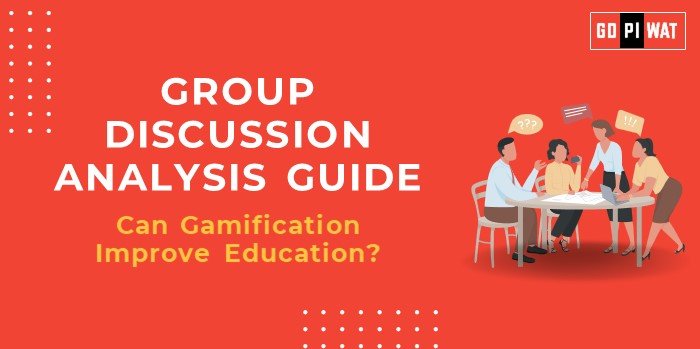📋 Can Gamification Improve Education?
🌐 Introduction to Gamification in Education
Context: In a rapidly digitalizing world, gamification—integrating game-like elements in non-game contexts—has emerged as a powerful tool for education, aiming to make learning more engaging, interactive, and effective.
Background: Gamification in education is rooted in game theory, behavioral psychology, and technology, offering students a more immersive learning experience. Educational institutions globally are exploring how gamification can aid in knowledge retention and foster essential skills.
📊 Quick Facts and Key Statistics
- 📈 Increased Engagement: Studies show that gamified learning can increase student engagement by up to 50%, leading to higher retention rates.
- 💰 Market Growth: The global educational gamification market is expected to reach $30.7 billion by 2026, underscoring growing interest and investment.
- 🧠 Cognitive Benefits: Gamification can improve students’ cognitive skills by as much as 24% in problem-solving and critical thinking.
- 🎮 K-12 and Higher Education: Over 60% of K-12 educators report using some form of gamification, with tools like Kahoot, Classcraft, and Minecraft Education gaining popularity.
👥 Stakeholders and Their Roles
- 🏫 Educational Institutions: Adopt gamified methods to enhance learning outcomes and better equip students with 21st-century skills.
- 💻 EdTech Companies: Develop gamified platforms, games, and apps tailored for different age groups and learning objectives.
- 🎓 Students: Primary beneficiaries who experience increased motivation, engagement, and improved learning.
- 🏛️ Government and Policy Makers: Encourage innovative teaching methods through policy and funding to modernize education and address skill gaps.
🏆 Achievements and Challenges
✨ Achievements
- 🌟 Enhanced Engagement: Gamification makes learning more interactive and enjoyable, motivating students to participate actively.
- 🛠️ Skill Development: Games support the development of critical skills, including collaboration, strategic thinking, and problem-solving.
- 🌍 Inclusive Learning: Gamification caters to different learning styles, making it inclusive and beneficial for diverse student needs.
⚠️ Challenges
- 💸 Cost and Accessibility: Implementing gamified platforms can be costly, limiting access in low-resource settings.
- 🕹️ Overuse and Distraction: Without moderation, gamification can lead to excessive screen time and distract from core educational objectives.
- 📋 Assessment Difficulties: Measuring learning outcomes from gamified experiences can be challenging, as traditional assessment methods may not apply.
Global Comparisons: Finland has successfully incorporated gamification, showing improvements in student engagement and satisfaction. In the United States, numerous schools are adopting gamification in subjects like STEM, with notable success. Singapore’s math curriculum uses gamified techniques, improving students’ mathematical abilities and gaining global recognition.
💡 Structured Arguments for Discussion
- ✔️ Supporting Stance: “Gamification makes education more engaging and accessible, resulting in higher participation and better learning outcomes.”
- ❌ Opposing Stance: “Despite its appeal, gamification can dilute educational rigor, leading students to prioritize fun over meaningful learning.”
- ⚖️ Balanced Perspective: “While gamification enhances engagement, a careful balance is necessary to ensure it complements rather than detracts from educational goals.”
🔑 Effective Discussion Approaches
- 📊 Opening Approaches:
- Statistical Start: “Studies reveal that gamification can boost learning retention rates by up to 50%, suggesting a potentially transformative impact on education.”
- Contrast: “While traditional learning methods remain core to education, gamification offers a fresh approach to engage modern learners.”
- Case Study: “Singapore’s math curriculum is a prime example of gamification’s positive impact, with students showing significant skill improvement.”
- 🛠️ Counter-Argument Handling: Cost Concerns: “While initial costs are high, gamified learning platforms have a long-term value by improving student outcomes.” Overuse Risks: “Balancing gamified and traditional methods can mitigate the risks of excessive screen time.”
📈 Strategic Analysis of Strengths and Weaknesses
- 💪 Strengths: Enhances student engagement and motivation. Supports diverse learning styles.
- 💔 Weaknesses: Implementation costs. Risk of overuse or distraction.
- 🌟 Opportunities: New EdTech innovations. Potential for customized, adaptive learning experiences.
- ⚡ Threats: Screen time concerns. Possible overemphasis on entertainment rather than education.
📚 Connecting with B-School Applications
- 💼 Real-World Applications: Gamification in education offers insights for B-school students in fields like EdTech, digital marketing, and organizational learning.
- ❓ Sample Interview Questions:
- “How can gamification be balanced to improve education without reducing academic rigor?”
- “What role do you see for gamification in corporate training?”
- 🎓 Insights for B-School Students: Gamification principles can be applied to business training, marketing, and customer engagement. Understanding gamification trends can support roles in educational policy, product management, and digital strategy.


